Nothing tests your patience quite like creating a wedding seating chart. One wrong move and suddenly you’ve put your chatty cousin next to your introverted boss, your ex-boyfriend next to your college roommate who still hates him, and somehow Uncle Tony is sitting at the kids’ table. This isn’t just planning — it’s diplomacy, family politics and a high-stakes puzzle game rolled into one.
The good news? It doesn’t have to end in chaos. Here’s how to nail your seating plan and keep the peace (and your sanity) all the way to “I do.”
1. Figure out your wedding guest list
You can’t play seating-chart matchmaker without knowing who’s actually showing up. That means RSVPs – the real ones, not the “I’ll totally be there” texts your cousin sent six months ago. If you’re still waiting on replies past the deadline, it’s time to make some phone calls (or enlist your mom, who can track down a non-responder faster than a debt collector).
Keep in mind, even with a confirmed guest list, you’ll likely have a couple of last-minute changes – a guest who can’t travel, a surprise plus-one. That’s normal. Build in a little flexibility so you’re not ripping your chart apart the night before your wedding.
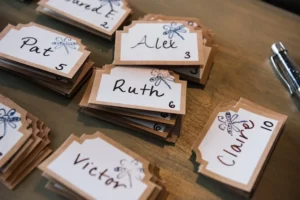
2. Choose the wedding table shapes
Once you’ve locked in the guest list, the next big piece of the wedding seating chart puzzle is deciding what they’ll actually be sitting at. Think of your tables as the stage for your reception, because the shape you choose sets the tone for the entire room.
Round tables are the conversational sweet spot – everyone can make eye contact without awkward neck craning. Long banquet tables? They’re pure aesthetic magic and give off that “Tuscan vineyard” vibe, even if you’re in a downtown ballroom.
Can’t decide? Mix and match. The key is knowing exactly how many guests each table shape can comfortably fit (keyword: comfortably – no one wants to elbow-jab their way through dinner).
Once you’ve nailed the shape and capacity, you can start slotting people in like the fabulous host-slash-strategist you are.
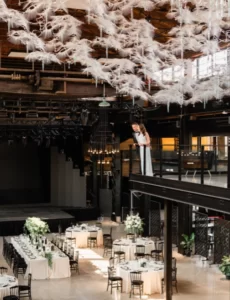
3. Seat the important wedding guests first
No offence to your random co-workers or great aunt So-and-So, but start with your VIPs – parents, siblings, grandparents and the people you can’t imagine not having in prime view. Blended families? That’s where it gets… interesting.
You might need more than one “important” table to keep everyone happy (and a few tables in between, just in case). Handle these placements first – they’re your anchor points for the rest of the wedding seating chart.
4. Find the perfect place for your friends
Your friends deserve more than a “wherever they fit” approach. If they’ll hang onto every word of the wedding speeches, keep them close to the head table with a clear view. If they’re destined to be dance-floor legends, seat them near the bar or DJ booth so they’re never far from the action.
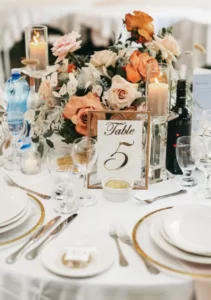
5. Do not make a singles table
It’s 2025. A singles table is the fast track to awkward small talk and unnecessary side-eye. Seat solo guests with people they actually know – friends, family, co-workers – not a random group of strangers united only by their relationship status.
6. Build (and manage) your seating chart in a digital tool
Whether it’s a spreadsheet, planning app or vendor-provided template, keep your chart digital so you can move guests around without ripping paper to shreds. Still a visual thinker? Print a copy once you’re happy with the arrangement.

7. Assign wedding tables only, not seats
Skip micromanaging and let guests choose their own chair once they’re at the table. Just give them a fun way to find it – place cards at the entrance, tied to Champagne glasses, tucked into favours, whatever fits your vibe.
8. Display your wedding seating chart
After all the work of perfecting your seating plan, give it the spotlight it deserves. Keep it chic and simple with a large display board, or turn it into a showpiece with hand-lettered calligraphy. Mirrors, etched acrylic, even dramatic floral frames – your wedding seating chart isn’t just a guide, it’s a welcome statement that sets the tone for the night.
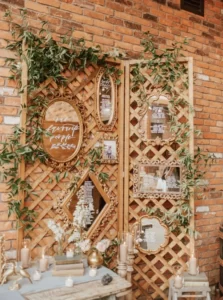
Want to really wow? Have wedding guests’ names written on unexpected keepsakes – vinyl records, cocktail glasses, vases of blooms, jars of honey, even bottles of wine. It takes more effort, but the “wow” factor lasts long after the last dance.
Read more tips in our Today’s Bride Fall/Winter 2025 issue.







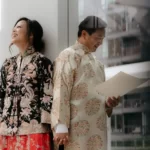

Leave a Reply